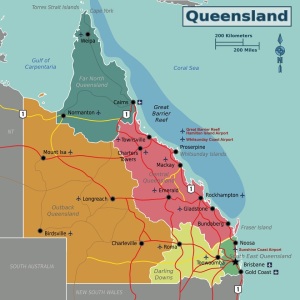The cause(s) of the Little Ice Age is (are) uncertain, but Wikipedia puts forward some ideas with varying degrees of plausibility, including 'inherent variability in global climate' (indeed), and 'decreases in the human population' (what?). Now some interesting evidence of it has been found in Australia.
A study by University of Adelaide researchers and Queensland Government scientists has revealed what south-east Queensland's rainfall was like over the last 7000 years – including several severe droughts worse and longer lasting than the 12-year Millennium Drought, reports Phys.org.
The study – published in Scientific Reports—used preserved paper-bark tea tree leaves from North Stradbroke Island's Swallow Lagoon that have been collecting in the sediment for the past 7700 years.
The leaves – analysed for chemical variation—provided a wealth of information on the El Niño-Southern Oscillation (ENSO) and how it was impacted by major climate changes over the millennia, including the Little Ice Age from about 1450 to 1850.
Researchers found a generally wet period about 5000 to 6000 years ago – indicating a more consistent La Niña-like climate.
"This changed to a more variable and increasingly drier climate about 3000 years ago – highlighting a strengthened El Niño phase," says Associate Professor John Tibby from the University of Adelaide's Geography Department.
"There were substantial droughts during this phase, drier than the Millennium Drought which south-east Australia experienced from 1997-2009. In fact, from what we can ascertain, the probability of a drought worse than the Millennium Drought is much higher than the current prediction of one in 10,000 years.
"Our rainfall reconstruction suggests that it may be as much as 10 times more likely."
Associate Professor Tibby said the Little Ice Age, which ended about the time south-east Queensland was settled, was unusually wet.
The study was possible because Swallow Lagoon contains a continuous sequence of leaves from a single species of tree. Variations in the chemistry of these leaves allowed scientists to reconstruct past rainfall.
Full report here.
from Climate Change Skeptic Blogs via hj on Inoreader http://bit.ly/2SEr1x1

No comments:
Post a Comment